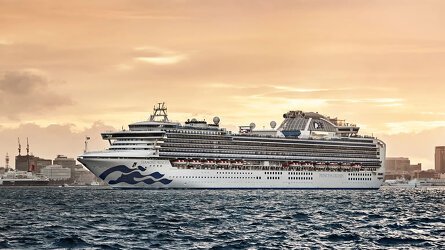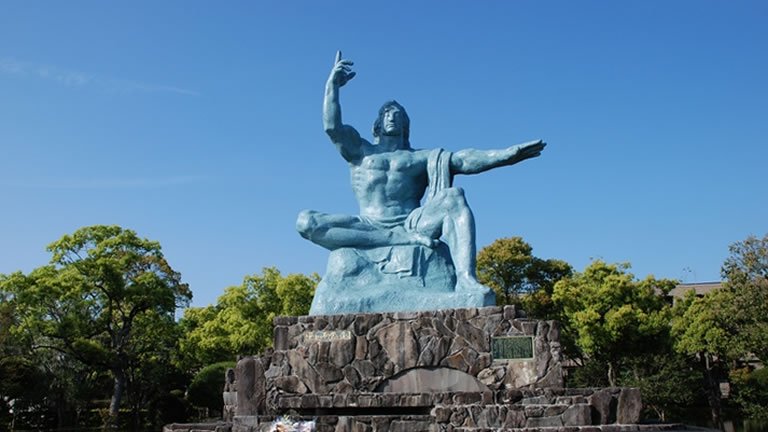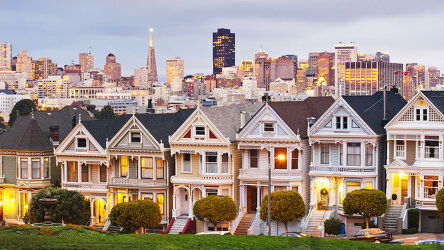Overview
Cruise Itinerary
Tokyo, Japan's bustling capital, offers an eclectic mix of tradition and modernity. Begin your adventure with a visit to the Asakusa district, home to the ancient Senso-ji Temple, Tokyo's oldest and most significant temple. Nearby, Nakamise Street is perfect for souvenir shopping and sampling traditional snacks.
For a panoramic view of the city, head to the Tokyo Skytree, one of the world's tallest towers. Shibuya Crossing, one of the busiest pedestrian intersections, is a must-see for its sheer scale and energy. To experience tranquility, visit the serene Meiji Shrine, nestled in a lush forest in Shibuya. Don't miss trying Tokyo's renowned sushi at Tsukiji Outer Market or exploring the vibrant Harajuku district for trendy fashion and unique cafes.
Yokohama Port serves as a gateway for travelers heading to Tokyo, located approximately 30 kms (about 19 miles) north of the port. The journey to Tokyo can take around 30 to 45 minutes by train. The Osanbashi Yokohama International Passenger Terminal is the main docking site for cruise ships. The most efficient way to travel is by train, with the Minatomirai Line directly connecting Yokohama to Shibuya, a major hub in Tokyo. This allows visitors to easily access famous sights such as the Shibuya Crossing, Meiji Shrine, and the vibrant district of Shinjuku. Given the limited time typical of cruise stopovers, planning ahead to prioritize which attractions to visit is advisable.
Revitalize and refresh body, mind and soul onboard Diamond Princess - from rejuvenating spa treatments and the tranquility of a top-deck retreat reserved just for adults to our state-of-the-art fitness centers, you’ll find all the elements to come back new.
Nagasaki, situated on the northwest coast of Kyushu, Japan, holds a profound historical significance, famously known for being the site of the second atomic bomb drop during World War II. Today, the city is a symbol of peace and resilience, with the Peace Park and Atomic Bomb Museum providing moving insights into the events and aftermath of 1945.
Beyond its historical sites, Nagasaki enchants with its unique blend of Japanese and Western cultural influences, seen in its architecture and local cuisine. Glover Garden showcases exquisite colonial-period homes, offering views over the picturesque harbour. The city's steep slopes and narrow streets add a charming layer to its scenic tram rides, making Nagasaki a captivating destination full of history and beauty.
Known for its beaches, mountains and temples, Busan is a large port city in South Korea. Enjoy the Haeundae Beach with its Sea Life Aquarium and Folk Square with traditional games such as tug-of-war or head to Gwangalli Beach for bars and views of modern Diamond Bridge.
Top Things to Do in Busan:
- Shop at Centum Shinsegae Department Store; the world’s largest!
- Enjoy the street art and food on a walking tour of the pastel-coloured Gamcheon Village.
- Explore Haedong Yonggungsa Temple and grounds, located at the top of a huge rock rising from the ocean
- Visit the UNESCO World Cultural Heritage area Gyeongju, south east of the city.
Sakaiminato, nestled on the western tip of Japan's Tottori Prefecture, serves as a gateway to the enchanting world of Japanese folklore and seafood delicacies. The city is renowned for its association with Mizuki Shigeru, the celebrated manga artist behind "GeGeGe no Kitaro," which is vividly brought to life along the Mizuki Shigeru Road, adorned with over 100 bronze statues of the series' characters.
For culinary adventurers, the Sakaiminato Fish Market offers a fresh glimpse into Japan's vibrant seafood culture, with opportunities to savor local specialties like crab and squid. Nearby, the Adachi Museum of Art, famous for its stunning Japanese gardens and impressive collection of contemporary Japanese paintings, offers a serene retreat for art lovers
Kyoto, Japan's former imperial capital, is renowned for its classical temples, traditional wooden houses, and beautiful gardens. Begin your exploration at Fushimi Inari Shrine, famous for its thousands of red torii gates. Next, head to Kinkaku-ji, the Golden Pavilion, a stunning Zen temple whose top two floors are completely covered in gold leaf.
For a taste of traditional culture, visit the Gion district, where you might glimpse geishas in their exquisite kimonos. Don’t forget to indulge in Kyoto’s renowned cuisine, including matcha-flavored treats and kaiseki, a multi-course dining experience.
Maizuru, located on the Sea of Japan coast, serves as a gateway port for visiting Kyoto. The port is about 90 kilometers (approximately 56 miles) from Kyoto, requiring a drive of around 1.5 to 2 hours by car or shuttle bus.
Head to Kanazawa and the Ishikawa Prefecture and you step back in time to the Edo Period (1603 to 1886), the height of samurai culture.
Because most of the original architecture is still preserved, you can expect an eclectic mix of samurai streets, teahouses graced by geisha, thought-provoking modern museums and delectable foodie trends (gold-leaf ice cream anyone?). The crowning jewel of Kanazawa is the sensational Kenrokuen Garden, where locals and tourists visit to soak up the ever-changing seasonal beauty.
Sakata, nestled in the Yamagata Prefecture of Japan, seamlessly blends historical elegance with natural beauty. This coastal city is historically significant for its role as a prosperous port during the Edo period, a heritage that is still palpable in the preserved merchant houses and old storehouses, now converted into museums and galleries. One notable site is the Sankyo Warehouse, which offers a glimpse into Sakata's past trading prowess.
Surrounding the city, the beauty of the Mogami River and nearby Mount Chokai enhances Sakata's scenic landscape. The local cuisine, particularly seafood, reflects the city’s coastal location and is a must-try for visitors. Additionally, the annual Sakata Fireworks Festival lights up the summer sky, combining traditional and contemporary Japanese culture in a spectacular display.
Hakodate is one of the most popular city destinations in Japan. Here you can experience diverse dynastic architecture, the last Shogun battlefield and enjoy shimmering night views from Mount Hakodate. Located along Hokkaido's southwestern tip, you can immerse yourself in history within the star-shaped walls of Fort Goryokaku and explore the site of famous battles that transformed Japan.
Enjoy a mouth-watering seafood rice bowl (kaisen-don) from the Hakodate Morning Market and then relax with a soak in the Yunokawa hot springs on Hakodate's outskirts.
Miyako, located on the eastern coast of Honshu in Iwate Prefecture, Japan, is a city known for its stunning natural beauty and rich cultural heritage. The dramatic coastline of Jodogahama Beach, with its pristine white pebbles and clear blue waters, is a major attraction, offering breathtaking views and a peaceful retreat.
Miyako is also home to the Sanriku Fukko National Park, where visitors can explore the rugged landscape and observe diverse wildlife. The city has a deep connection to its maritime roots, evident in its fresh seafood cuisine, with local delicacies like sea urchin and abalone being particularly popular. The Miyako Fish Market is an excellent place to experience the local flavours and vibrant atmosphere.
Nikko, nestled in the mountains of Tochigi Prefecture, Japan, is a place where history, culture, and natural beauty converge spectacularly. Renowned primarily for its ornate shrines and temples, including the UNESCO World Heritage sites of Toshogu Shrine, Futarasan Shrine, and Rinnoji Temple, Nikko offers a profound glimpse into Japan's rich architectural and spiritual heritage. Toshogu, the most lavishly decorated shrine, is famous for its intricate wood carvings, including the renowned "Hear no evil, speak no evil, see no evil" monkeys.
Beyond its cultural treasures, Nikko is also celebrated for its natural scenery. The area is home to the scenic Lake Chuzenji and Kegon Falls, one of Japan's most beautiful waterfalls, especially stunning in autumn when the foliage turns fiery red and gold.
Hitachinaka, located in Ibaraki Prefecture, Japan, is renowned for its scenic coastal beauty and the sprawling Hitachi Seaside Park. This park is famous for its seasonal flowers, especially the baby blue eyes (Nemophila) that create a stunning blue carpet in spring and the vibrant red kochia bushes in autumn. It offers a spectacular natural display that draws visitors from around the world.
Apart from its natural allure, Hitachinaka also boasts of Nakaminato Fish Market, where visitors can enjoy fresh seafood and observe local culinary practices. The city's proximity to the coast encourages activities like cycling along the seaside paths and relaxing on the beaches. Hitachinaka blends its industrial background with considerable green spaces and oceanic influences, providing a refreshing escape with diverse attractions for all ages.
Tokyo, Japan's bustling capital, offers an eclectic mix of tradition and modernity. Begin your adventure with a visit to the Asakusa district, home to the ancient Senso-ji Temple, Tokyo's oldest and most significant temple. Nearby, Nakamise Street is perfect for souvenir shopping and sampling traditional snacks.
For a panoramic view of the city, head to the Tokyo Skytree, one of the world's tallest towers. Shibuya Crossing, one of the busiest pedestrian intersections, is a must-see for its sheer scale and energy. To experience tranquility, visit the serene Meiji Shrine, nestled in a lush forest in Shibuya. Don't miss trying Tokyo's renowned sushi at Tsukiji Outer Market or exploring the vibrant Harajuku district for trendy fashion and unique cafes.
Yokohama Port serves as a gateway for travelers heading to Tokyo, located approximately 30 kms (about 19 miles) north of the port. The journey to Tokyo can take around 30 to 45 minutes by train. The Osanbashi Yokohama International Passenger Terminal is the main docking site for cruise ships. The most efficient way to travel is by train, with the Minatomirai Line directly connecting Yokohama to Shibuya, a major hub in Tokyo. This allows visitors to easily access famous sights such as the Shibuya Crossing, Meiji Shrine, and the vibrant district of Shinjuku. Given the limited time typical of cruise stopovers, planning ahead to prioritize which attractions to visit is advisable.
Love Sabatini’s? (Or really good Italian dinners?) You’ll be happy to hear this popular specialty restaurant has returned to its roots. Think traditional Italian comfort cuisine. Our new menu embraces the old: tried-and-true family recipes our chefs brought with them from Italy, plus exquisite Italian wines and cocktails. You can even enjoy some shareable plates exclusively at Sabatini’s Trattoria.
Nagasaki, situated on the northwest coast of Kyushu, Japan, holds a profound historical significance, famously known for being the site of the second atomic bomb drop during World War II. Today, the city is a symbol of peace and resilience, with the Peace Park and Atomic Bomb Museum providing moving insights into the events and aftermath of 1945.
Beyond its historical sites, Nagasaki enchants with its unique blend of Japanese and Western cultural influences, seen in its architecture and local cuisine. Glover Garden showcases exquisite colonial-period homes, offering views over the picturesque harbour. The city's steep slopes and narrow streets add a charming layer to its scenic tram rides, making Nagasaki a captivating destination full of history and beauty.
Often called the 'Island of the Gods,' Jeju island a volcanic island off the coast of South Korea is home to some of the Korean Peninsula's most beautiful natural sites is renowned for its unique natural landscapes, including the Hallasan Mountain, a dormant volcano and the highest peak in South Korea.
The island's diverse attractions range from beautiful beaches like Hyeopjae and Hamdeok, to the mysterious Manjanggul Lava Tube, a UNESCO World Heritage site.
Jeju's rich cultural heritage is evident in its local cuisine, traditional Haenyeo (female divers) culture, and folk villages, making it a fascinating destination for those seeking both relaxation and adventure.
Savour fresh sashimi at Kai Sushi, enjoy street performers in the dazzling Atrium, or catch a lavish show in the theatre. How about immersing yourself in a traditional Japanese bathing experience at the Izumi Japanese Bath, the largest at sea?
Otaru, located on the northwest coast of Hokkaido, Japan, is a charming port city known for its well-preserved architecture and scenic canals. The Otaru Canal, lined with historic warehouses, is a popular attraction, especially beautiful when illuminated at night. A stroll along the canal offers a glimpse into the city's past as a bustling trade hub.
The city is also famous for its glassworks, music boxes, and sake distilleries. Visitors can explore the Otaru Music Box Museum and the Kitaichi Glassworks to experience the local craftsmanship. The vibrant Sakaimachi Street, with its array of shops and cafes, is perfect for enjoying local delicacies and shopping for unique souvenirs. With its blend of history, culture, and picturesque scenery, Otaru is a delightful destination in Japan.
Honshu's northernmost city is full of picturesque historic temples, museums, and close to incredible nature like Mt. Hakkoda. In the spring and summer, Aomori bursts to life with cherry blossom festivals and the fiery Nebuta Festival every August. Ships dock at the Shin-Chuo wharf.
Top Things to Do in Aomori:
- visit the Hirosaki Castle town
- take the aerial tramway up Mt. Hakkoda
- see the grand buddha at Seiryuu-ji Temple
- visit the Nebuta Warasse Museum
- cruise on Lake Towada
Original musicals, dazzling magic shows, feature films, top comedians, and nightclubs that get your feet movin' and groovin' - there’s something happening around every corner, and you have a whole cruise of days and nights to experience it all.
Tokyo, Japan's bustling capital, offers an eclectic mix of tradition and modernity. Begin your adventure with a visit to the Asakusa district, home to the ancient Senso-ji Temple, Tokyo's oldest and most significant temple. Nearby, Nakamise Street is perfect for souvenir shopping and sampling traditional snacks.
For a panoramic view of the city, head to the Tokyo Skytree, one of the world's tallest towers. Shibuya Crossing, one of the busiest pedestrian intersections, is a must-see for its sheer scale and energy. To experience tranquility, visit the serene Meiji Shrine, nestled in a lush forest in Shibuya. Don't miss trying Tokyo's renowned sushi at Tsukiji Outer Market or exploring the vibrant Harajuku district for trendy fashion and unique cafes.
Yokohama Port serves as a gateway for travelers heading to Tokyo, located approximately 30 kms (about 19 miles) north of the port. The journey to Tokyo can take around 30 to 45 minutes by train. The Osanbashi Yokohama International Passenger Terminal is the main docking site for cruise ships. The most efficient way to travel is by train, with the Minatomirai Line directly connecting Yokohama to Shibuya, a major hub in Tokyo. This allows visitors to easily access famous sights such as the Shibuya Crossing, Meiji Shrine, and the vibrant district of Shinjuku. Given the limited time typical of cruise stopovers, planning ahead to prioritize which attractions to visit is advisable.
Life Onboard Diamond Princess

Boasting signature Princess features and unique spaces on board, Diamond Princess serves up a distinct cruise experience. Read more

Delight your palate with an array of dining options, including a dedicated sushi bar and selections from renowned chefs. Read more

Enriching. Engaging. Entertaining. Carefully curated programs will elevate your on board and on shore experience. Read more

Sit back and be entertained with a line up of dazzling performances, musical revues, and Movies Under the Stars. Read more

Inspired by a traditional Japanese onsen experience, guests can soak in the warm waters while soaking up the ocean views. Read more

With ample spaces and facilities for recreation and relaxation, there is something for everyone on board. Read more

Diamond Princess Reviews (2) Most Recent 'Diamond Princess' Reviews
Availability Click on prices below to view cabin upgrades and details
Tour & cruises prices are per person. Prices shown have savings applied, are subject to availability and may be withdrawn at any time without notice. Pricing and trip details are correct at this point in time, however are subject to confirmation at the time of booking and are subject to change by Princess. For cruise itineraries, cabin images are sourced from Princess. These should be treated as indicative only. Cabin inclusions, upholsteries and room layout may differ to the image(s) shown depending on the ship selected and your sailing dates.



















